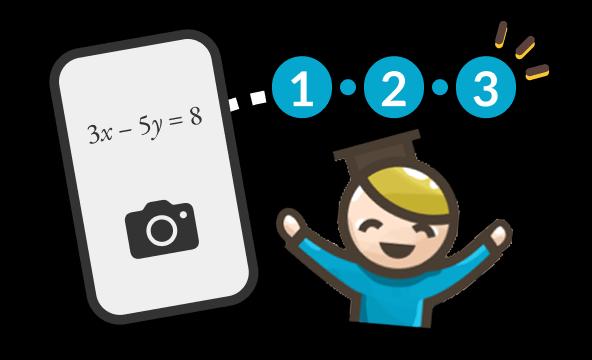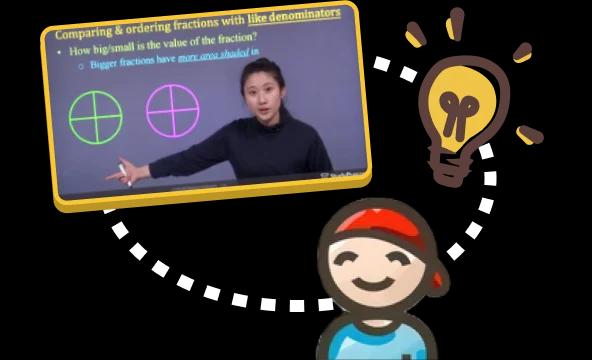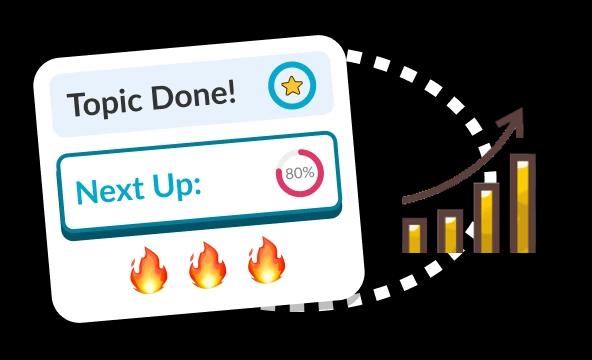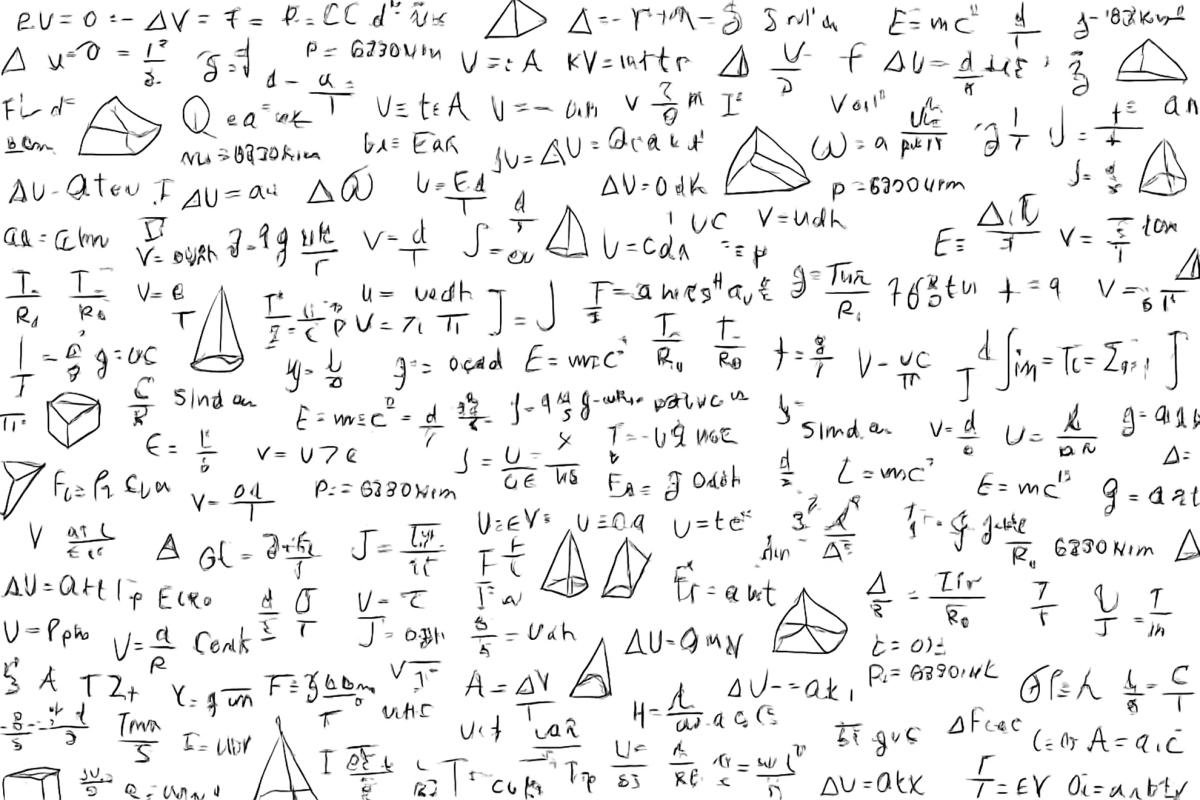Get Year 11 Maths Help
Master quadratics, trigonometry, and algebra with photo recognition and real GCSE exam practice
Try Our Year 11 Maths Practice Test


Photo Search
Snap maths homework to find the right lessons

Find Your Weak Spots
Find gaps before your GCSE exams

Practice Until Perfect
GCSE exam practice at your level
Year 11 Maths Topics
Help
1. Number System
2. Surds
3. Laws of Indices
4. Solving Linear Equations
5. Linear Inequalities
6. Linear Relations
7. Linear Functions
8. Linear Equations
9. Solving Simultaneous Equations
10. Exponential Functions
11. Operations of Polynomials
12. Factorising Polynomial Expressions
13. Transformations of Functions
14. Algebraic Fractions
15. Reciprocal Functions
16. Introduction to 3-Dimensional Figures
17. Properties of Triangles
18. Congruent Triangles
19. Circle Geometry
20. Scale Factors and Similarity
21. Pythagorean Theorem
22. Trigonometry
23. Bearings
24. Volume
25. Measuring Systems
26. Introduction to Probability
27. Probability
28. Statistics
29. Data and Graphs
30Chapters
197Topics
1328Videos
Is Year 11 Maths hard?
If you're currently in year 11 and looking for easy practice materials ahead of your upcoming maths exams, you're not alone. There are hundreds of thousands of students just like you that benefit from our easy maths revision guides that help them tackling every aspect of year 11 maths.
The fact that you're here, shows that you understand how important a good grade can be for future college applications and eventual employment. Though it does seem like a daunting challenge, you're now one step closer to conquering year 11 maths.
You'll find that maths becomes a lot easier once you have a firm understanding of the basics, so don't be afraid to revisit old topics to make sure you truly understand them before advancing on to the more complex elements of the curriculum. Remember, you're not expected to know everything from day one, so go at your own pace and use StudyPug as a companion to your studies.
We've got content that can provide easier year 11 maths revision and information that can help with your homework too. Our online video tutorials will walk you through all the relevant topics that are bound to come up in your end of year exams, and we offer step-by-step examples across a variety of topics, including the following:
- Circle Theorem
- Indices
- Algebraic Proof
- Vectors
- And more
Our year 11 maths videos will show you easy to understand solutions to even the hardest GCSE maths test questions. Furthermore, you can test your knowledge using our GCSE maths revision materials. The content we deliver, has been designed by experienced GCSE maths teachers and we have worked to ensure that we cover all the topics you'd expect to find in current maths textbooks.
We understand that within different schools and colleges, there will be different awarding bodies. With that in mind, we have constructed our content to cover the following:
- Edexcel GCSE Maths
- AQA GCSE Maths
- OCR GCSE Maths
- WJEC GCSE Maths
We also understand that every learner has their own way of learning. To that end, we have decided to take a "from the ground up" approach that starts from the basics, assumes no prior knowledge, and covers all areas of your year 11 maths syllabus. Each lesson, has been designed to seamlessly flow from one topic to the next, allowing you to build off the information you've just learned, introducing more complex topics when you're ready.
How to Revise for Year 11 Maths?
To effectively revise for your year 11 maths exams, you'll need to be taking notes in class and testing your knowledge to review your strengths and weaknesses. Use year 11 worksheets and our revision materials to help you highlight the areas that you need to work on.
Taking the time to use these tools will not only help you build more effective revision strategies. but it will also help you to retain the information. Remember, memorizing maths isn't as good as truly understanding the problems and how to solve them, so take the time to truly digest the information you're receiving.
We understand that finding time and motivation to study can be difficult. Many students struggle to stay focused in class or find it difficult and boring to work from a textbook. If that sounds like you, StudyPug may just be what you're looking for. We offer an extensive collection of fun and easy online revision aides that cover the same year 11 maths questions that can be found in those boring maths books.
Our year 11 maths tutorial platform offers you 24/7 help and as our lessons are delivered via a video format, you can pause, rewind, or fast-forward the info, allowing you to skip content that's not relevant and learn at your own pace. We've found that a lot of our students prefer this video service as the content is delivered in a much more conversational way that's easier to follow.
Use our content to address any areas of weakness that you have and sit mock exams to track your progression. As you study more and sit mock tests, you should see an improvement in your performance. To get you started, we're offering a collection of free year 11 maths lessons across the following subject areas:
- Understanding the Number System
- Least Common Multiple (LCM)
- Square and Square Roots
- Operations with Radicals
- Product Rule of Exponents
- Solving Linear Equations Using Multiplication and Division
- Expressing Linear Inequalities Graphically and Algebraically
- Parallel Line Equation
- And more
I Have Gone Through All the Past Papers – What Now?
Efficient year 11 maths exam prep goes beyond past papers, so if you've completed AQA past papers, SQA past papers, and so on, you should be utilizing our extensive collection of videos to cover all topics on the curriculum. Remember, the year 11 maths questions that appeared on past tests, aren't necessarily going to be the ones that appear on your upcoming exam, so make sure you have a firm understanding across all potential topics. Don't assume that because a topic wasn't featured in past years, it won't feature this year.
How to Pass Year 11 Maths?
It cannot be stressed enough, if you want to pass year 11 maths with ease, you must revise, revise, revise! This can dramatically improve your performance during your exams and can help you achieve that grade 9.
As mentioned above, sit mock exams using year 11 maths past papers. Try to adhere to the time constraints for each paper, avoid using your phone, and remove any other distractions while you sit the test. Have family or friends mark the paper on your behalf and then review your score. If you get a few questions wrong in a specific topic, revisit the whole topic and make sure you understand where you went wrong. Similar questions are bound to appear on your actual test.
Examiners will want to see evidence that you can arrive at the correct answers without simple memorization, so show your working out to earn additional marks. These marks can be the difference between a grade 8 and a grade 9.
Additionally, don't spend time on difficult problems early on. If it's too tough, skip it and come back to it later. Focusing to early on questions that you're struggling with could hold you back from getting to the questions you know how to answer. Once you've worked through the paper, you can then return to the trickier questions without that added pressure. If you finish all of the questions early, don't just sit there and relax! Go back, double check, and then triple check your answers. You may catch something you didn't notice.
Finally, to help you pass year 11 maths, use StudyPug! As your virtual Year 11 maths tutor, we have 1000s of lessons online to help you prepare for your tests. Our videos cover all aspects of GCSE maths, so regardless of whether your revising for GCSE foundation maths or require higher maths revision, we've got you covered.


